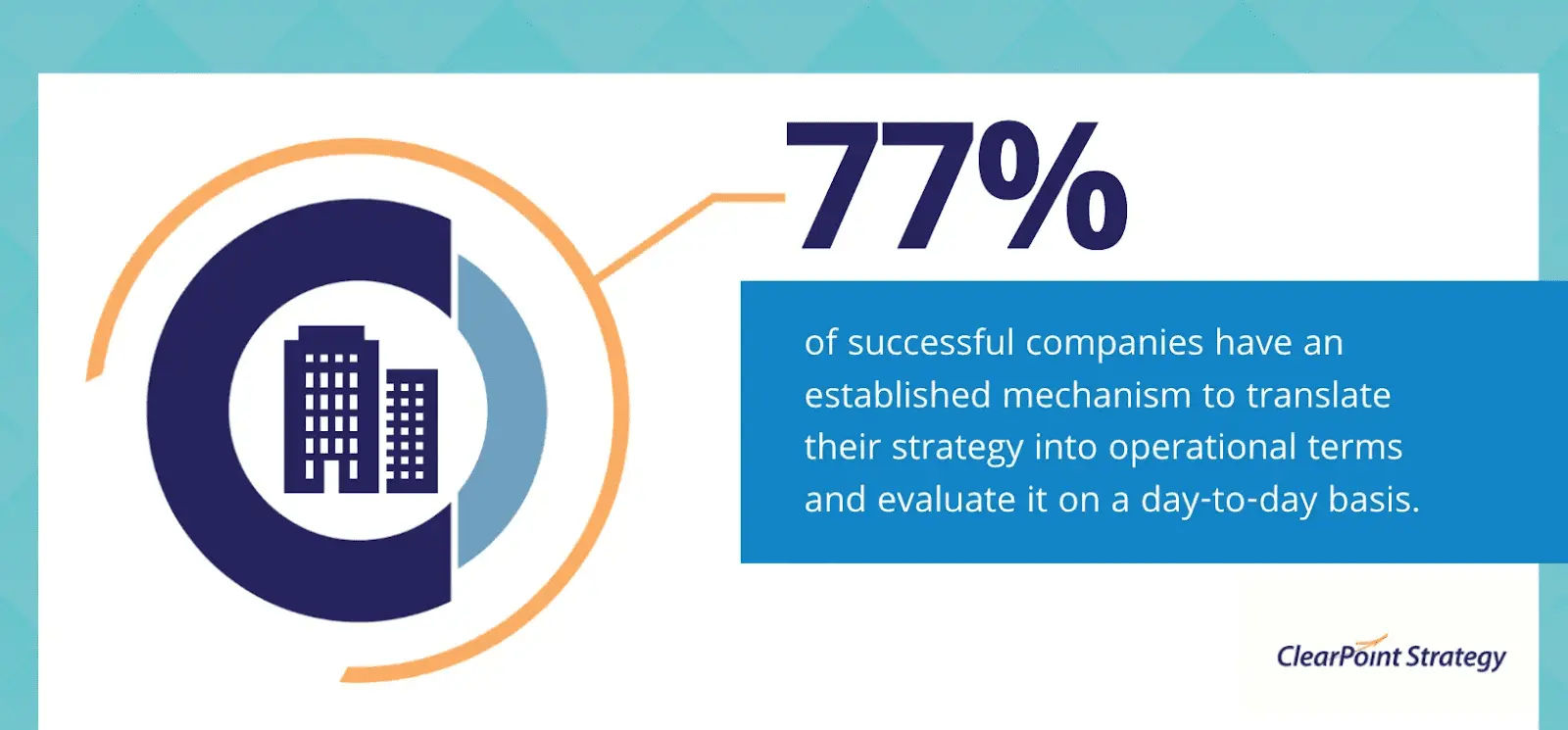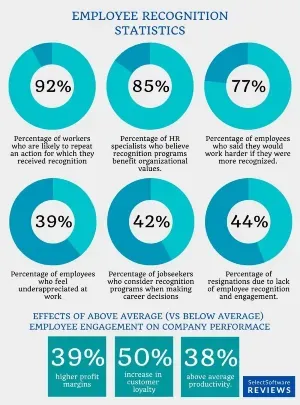The importance of employee development really can’t be overstated. From boosted productivity and improved performance to greater job satisfaction, encouraging self-improvement can have many associated benefits.
Of course, the instruction ‘do better’ isn’t that helpful. People need a set of realistic goals to work towards. But setting an objective and hoping for the best isn’t good enough. When setting any goals, ask yourself, ‘Are they SMART?’. If not, it’s time to go back to the drawing board.
But what exactly are SMART goals for employees? More importantly, how can they be implemented to support your staff’s development? We’ll discuss all that and more in this article.
What are SMART goals

SMART goals for employees are designed to help with goal setting. They are utilized by organizations of many shapes and sizes. Due to this, you might run into many different variations of the acronym. The five ingredients of the most popular version are: Specific, Measurable, Achievable, Relevant, and Time-bound.
Together, these form a checklist for assessing all employee goals. Let’s look at the SMART goal criteria in more detail.
- Specific - There’s no use setting vague or wooly goals. For example, the goal ‘improve time management skills’ is too unclear to be useful. Instead, you might aim to complete X number of tasks each day.
- Measurable - If people can’t measure progress, they can’t know if they’re successful in meeting their goals. Choose measurable goals that align with a clear set of key performance indicators (KPIs).
- Achievable - It’s okay to have big aspirations for your team members. But, your goals should be fair and realistic.
- Relevant - Goals need to be relevant to individual employees. For instance, you wouldn’t set a sales goal for a customer support agent.
- Time-bound - How long does a person have to achieve a specific goal? A deadline helps people to plan and make sure that an objective stays in the mind.
Benefits of Setting SMART Goals
Why should you take the extra time to set these kinds of objectives? Let's dig a little deeper into the advantages of setting SMART goals for employees.
Specific Goals Focus Attention and Effort Meaningfully
Most people are willing to put a lot of effort into meeting their goals. But, if their goals are too general and broad to be relatable, your staff will struggle to know where to focus their energy. As a result, your organization won’t be able to meet its overall targets. Worse still, vague goals could demotivate your staff, who could lose both their effort and focus.
Employees are more likely to pay attention to SMART goals because they can relate to them. Their objectives should be tailor-made considering each unique circumstance. This means that staff can see how completing goals not only helps the company, but their individual growth. This improves enthusiasm and highlights a path towards career progression in your company.
Quantifiable Metrics Help Track Progress Efficiently
Each team member needs a clear and specific objective that allows them to track their success over time. A study from Harvard Business School showed how measurable objectives can have a big impact, as participants with clear goals were 76% more likely to achieve them.
When employees are given a broad goal such as ‘improve customer satisfaction,’ they cannot track progress. For a goal to be effective, people need to be given quantifiable metrics that help them assess whether customer satisfaction is improving and whether their efforts are successful.
By following the ‘M’ in the SMART framework, you can create goals that have a clear sense of progress.
Defined Goals Motivate Individuals by Providing a Sense of Purpose

Employees should be able to describe their current career goals. If they can’t, it’s usually a big problem; staff need an objective to work towards. You’ll find that members of staff who lack a clear path are those who are likely to seek employment elsewhere.
This relates to their personal career goals but also to specific task goals. They want to understand how individual tasks contribute towards the organization’s objectives but also how they will develop their own experience and skills.
When goals clearly demonstrate this, they give a real sense of purpose and ownership to an employee. This will help them overcome any challenges that arise and, in turn, will have a positive effect on the people around them.
Goal-oriented Collaboration Fosters a Positive Work Environment
Lack of effective collaboration is an issue that plagues many organizations. Let’s describe a common workplace collaboration scenario. Team Member A has one view of how a project should be carried out, whilst Team Member B has a conflicting view. Instead of progressing towards objectives, the project is hampered by discussions around which view is better.
There’s a good chance this scenario might sound familiar. Conflicting visions are often the biggest barrier to effective teamwork. Luckily, setting SMART collaborative goals for employees helps to avoid this scenario.
In doing so, you reduce the risk of conflicting visions. Each team member has an objective to work towards. What’s more, with the help of the right collaboration tools, you can set goals that align with the strengths of each teammate. With everyone firing on all cylinders, you’ll complete more quickly and effectively.
How to Set Effective SMART Goals for Employees
So, it’s clear that there are many benefits to this approach. But how can you go about setting up SMART goals for employees? Below are some useful tips to bear in mind.
Analyze and Establish Organizational Objectives

Before you can look at individual goals, you need to think more broadly. After all, most goals need to be clearly aligned with your broader business objectives. If these aren’t clearly defined, you’ll struggle to set cohesive individual and team goals across your company.
Organizational objectives will vary from business to business. Identifying your individual aims begins by looking internally and working your way through the following steps.
- Carry out a SWAT analysis to measure the strengths and weaknesses of your organization.
- Identify potential solutions for each weakness.
- Listing goals in order of priority and assign a desired completion date.
Remember, any goals you set should follow the same SMART framework as your employee goals.
Identify Key Performance Areas to Track
By creating SMART goals that are as specific as possible, they’ll be easier to measure. This means setting objectives that align with a clear set of key performance indicators (KPIs).
Let’s look at a few common objectives for a variety of employees or teams within a B2B business and relevant KPIs for each.
- Convert 10% more sales leads - By tracking the inbound conversion rate, you can monitor an employee or team’s success in closing leads.
- Improve team productivity by 20% - This is a long-term goal that you could measure by using platforms like Trello or Asana, to track tasks and productivity over time.
- Double website traffic - The web traffic KPI can help you monitor traffic to your website.
You should also make sure you’re using tools to identify why some people are struggling to meet their goals. For example, there are great anonymous feedback tools that allow staff to express their opinions freely. Alternatively, by using the best employee scheduling software, you’ll be able to spot if some teams are overburdened, hampering their success.
Collaboratively Set Goals with Employees
Imposing goals on employees is never a good look. If you want people to connect with objectives, they need to be involved in the goal-setting process. Hold one-on-one meetings with individual staff members. Encourage them to reflect on their successes and setbacks and plan a path forward together.
By encouraging self-reflection, staff members will feel more enthusiastic about the goals set for them. They’ll be more likely to work towards self-improvement. Be sure to also make clear how an individual’s goals help work towards the objective of your organization.
Ensure Goals are Realistic and Achievable
When setting goals for individual team members, you tread a fine line. On the one hand, you could motivate and empower your staff to do better work. On the other, you could create undue stress and pressure, damaging the productivity of your employees. By setting unrealistic goals, you only achieve the latter. Your employees will never fulfill your expectations.
Remember, the ‘R’ in SMART stands for realistic. When setting goals, you need to work around your employees. This means understanding their strengths, limitations, and unique circumstances.
It can also be a good idea to talk with HR and take a look at your HR management software to aid your goal-making process. This will give you the extra information you need to make informed goals, that take people’s individual circumstances into consideration.
Set Deadlines for Goal Achievement
It’s important to keep in mind that SMART goals are ‘time-bound’–you need to set a deadline for each goal. This stage requires you to be firm but fair. Set a completion date too far in the future, and employees won’t take their goals seriously. Setting a date that is too near, though, will only create unfair levels of stress.
Clearly Communicate Goals to Employees
There’s little use setting goals if employees aren’t aware or don’t understand them. If you’ve already involved staff in the planning stage, there’s less chance of this happening. Take the time to have focused meetings that allow people to discuss their goals with you or their team leaders. This will also allow you to answer any questions they have.
Once goals have been set, don’t leave it there. Without reminders, staff are more likely to forget about their goals. Hold performance reviews with staff regularly, reflect on the progress towards meeting their goals, and provide actionable feedback.
Celebrate Achievements to Motivate Employees

As you can see from the image above, recognizing people’s successes and good work is clearly important.
It follows then, that the last thing you want is for employees to feel their hard work is going unnoticed. Take time to celebrate the work of your staff. This will have a fantastic effect on employee happiness and helps make sure your teams are keeping up the good work.
Celebration can take many different forms. You can introduce an ‘employee of the month’ system. Alternatively, you could offer incentives such as extra paid vacation days, pay raises, or even sweet treats. Or even, create a poll that lets individuals vote for how they want to celebrate.
Wrapping up
Goals are essential for the professional development of your employees. That said, setting the right goals can be very difficult. If your staff are to pay attention to the objectives you set, you need to devote time and attention to their creation. This means considering the needs of individuals as well as your wider organization.
Just remember, all goals need to align with the SMART criteria. Is your goal:
- Specific?
- Measurable?
- Achievable?
- Relevant?
- Time-bound?
If you can answer ‘yes’ to each of these points, you’ve created achievable goals for your employees. So, when setting any new goal, ask yourself, is it SMART?
Did you enjoy this article? Give Pics.io a try — or book a demo with us, and we'll be happy to answer any of your questions.






